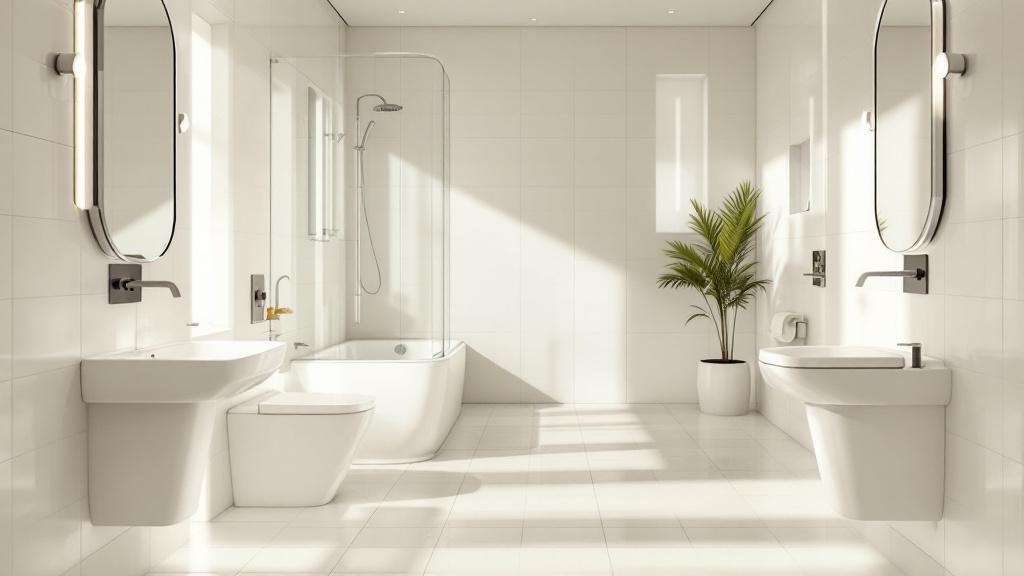The Importance of Regular Health Monitoring in In-Home Care
Transforming Senior Care with Continuous Monitoring

Enhancing Quality of Life Through Regular Health Checks
In-home health monitoring has become a cornerstone in advancing senior care, supporting aging-in-place, and improving health outcomes. As technological innovations continue to evolve, integrating these tools within the home enables timely interventions, personalized care, and greater independence for older adults. This article explores the multifaceted importance of consistent health monitoring, highlighting technological support, ethical considerations, and the vital role of family involvement in maintaining senior wellbeing.
Supporting Early Detection and Preventive Healthcare

How can health monitoring technology and tools support in-home care for seniors?
Modern health monitoring devices and tools are revolutionizing in-home care for seniors by providing continuous, reliable data on vital health parameters. Wearable devices, such as fitness trackers and smartwatches, can monitor heart rate, sleep quality, and activity levels, helping to identify early signs of health issues.
Blood pressure monitors, blood glucose meters, and pulse oximeters are easy-to-use devices that seniors or caregivers can operate independently. These tools enable regular tracking of blood pressure, blood sugar levels, and oxygen saturation, which are crucial for managing chronic conditions like hypertension and diabetes.
The data collected can be shared electronically with healthcare professionals through telehealth platforms, permitting virtual consultations without the need for frequent trips to clinics. Real-time monitoring allows for quicker adjustments to treatment plans, reducing the risk of complications.
Safety features integrated into many devices, like fall detection sensors and medication reminders, further support independence and emergency response. Smart home innovations, such as voice-activated systems and automated alerts, enhance safety and facilitate prompt action when needed.
For chronic disease management, these technologies help in early detection of worsening symptoms, allowing for timely interventions. Additionally, they promote active engagement in health, enabling seniors to participate actively in their care plan, which correlates with better outcomes and increased quality of life.
Overall, technological advancements make home health monitoring more accessible, accurate, and less intrusive, empowering seniors and caregivers to maintain health and independence effectively.
Early detection of health issues
Regular health checks at home enable early identification of issues like hypertension, diabetes, and cognitive decline. Detecting symptoms early can prevent disease progression and complications like heart failure or stroke.
Preventive checkups at home
Routine assessments, such as blood pressure, blood sugar, and weight, allow for continuous health evaluations. These checkups help in catching problems before symptoms develop, facilitating timely treatment and reducing healthcare costs.
Chronic disease management
Keeping track of vital signs and health metrics assists in managing chronic conditions proactively. Adjustments to medication or lifestyle can be made based on data trends, leading to better control and fewer hospital visits.
Reducing hospital visits
By intervening early and managing health issues at home, seniors often avoid emergency hospitalizations. This not only improves comfort and safety but also decreases healthcare system burdens and costs.
Through these applications of health technology, in-home care becomes more efficient, preventive, and personalized, ultimately supporting seniors to live healthier, independent lives.
The Convergence of Technology and Personalized Care Plans

What are the benefits of consistent health checks in improving health outcomes, safety, and independence for seniors?
Regular health assessments at home play a vital role in enhancing the health and well-being of seniors. These checkups enable early detection of chronic conditions such as heart disease, diabetes, and osteoporosis, which often develop gradually without noticeable symptoms.
By monitoring vital signs consistently—like blood pressure, blood sugar, and weight—seniors and caregivers can identify health issues before they become severe. This proactive approach reduces the likelihood of hospitalizations and emergency room visits, helping seniors maintain their independence longer.
One of the major benefits is the ability to tailor personalized care plans. These plans consider each person’s unique health needs, optimizing medication management, lifestyle adjustments, and preventive interventions like vaccinations or screenings. Such targeted strategies support better disease management and improve overall health outcomes.
Apart from physical health, regular health checks also address mental health factors, including depression or loneliness, fostering emotional well-being. Routine assessments help identify early signs of cognitive decline, allowing immediate action to be taken.
In summary, consistent health checks empower seniors to maintain their independence, improve safety, and achieve a higher quality of life by facilitating timely medical responses and promoting healthier lifestyles.
Early Detection and Continuous Monitoring: Saving Lives and Costs
What are the benefits of continuous health monitoring, such as early detection of health deterioration?
Continuous health monitoring at home offers many advantages, especially in detecting health issues early before they become critical. With constant tracking of vital signs like blood pressure, blood glucose, and heart rate, individuals can identify warning signs of worsening health conditions promptly. This early detection enables timely interventions, which can prevent severe complications or hospitalizations.
Better communication between patients and healthcare providers is another benefit. Technologies such as wearable devices and health apps allow real-time sharing of health data, keeping medical teams informed and ready to act when needed. This proactive approach supports more personalized and effective treatment plans.
Beyond safety, continuous monitoring can reduce unnecessary hospital visits and lower overall healthcare costs. It helps manage chronic diseases like diabetes, hypertension, and heart failure more efficiently, leading to better health outcomes and increased satisfaction among patients. In essence, ongoing health checks empower individuals and clinicians alike, resulting in healthier lives and more sustainable healthcare systems.
Aging-in-Place and Quality of Life Enhancement
Why is health monitoring critical for aging-in-place and maintaining quality of life?
Health monitoring is essential for seniors living independently because it helps detect health issues early. Conditions like cognitive decline, abnormal behavioral patterns, and fall risks often develop gradually without clear symptoms. Continuous monitoring allows for prompt intervention, which can prevent serious health emergencies.
In-home technology plays a vital role in supporting safety and independence. Motion sensors, contact sensors, environmental monitors, and health tracking devices watch over daily activities, sleep patterns, and vital signs. These tools not only gather important health data but also alert caregivers or medical professionals if something unusual occurs.
Monitoring systems help identify hazards such as falls or environmental dangers, reducing the chance of injury or emergency. They provide peace of mind for seniors and their families, knowing that help is available even if they cannot immediately call for assistance.
By maintaining ongoing oversight, health monitoring fosters confidence and promotes activity, which are crucial for quality of life. Seniors can enjoy greater independence, knowing their health and safety are being actively watched.
Overall, these technologies contribute significantly to aging-in-place by ensuring safety, supporting health, and enabling seniors to live fulfilling lives with dignity and autonomy.
Additional Resources
For more information, search using topics like "aging-in-place health monitoring" and "senior independence tools." These resources offer insights on the latest advancements and practical applications of monitoring technology, tailored to enhance the lives of older adults.
The Role of Family and Ethical Considerations in In-Home Monitoring

How does family involvement impact health tracking and support for seniors?
Family members are crucial in overseeing the health and well-being of seniors, especially in home or care settings. They observe subtle signs of health decline such as changes in mood, mobility, or facial expressions, which might escape routine medical checkups. By understanding their loved ones' normal behaviors and health patterns, families can identify issues early and communicate concerns effectively to healthcare providers.
To enhance this support, formal mechanisms like patient portals, safety dashboards, and care plans are used to involve families more actively. These tools provide easy access to health data, foster communication with care teams, and improve safety outcomes. For example, family involvement has been linked to reductions in fall risks, injuries, and hospital readmissions.
However, barriers such as staff attitudes, organizational resources, and technological literacy can limit participation. Addressing these challenges through education and system improvements encourages better collaboration, ensuring families contribute meaningfully to senior health monitoring.
What ethical issues arise with in-home health monitoring and how do they affect user trust?
Ethical concerns in home-based health monitoring mainly focus on privacy, autonomy, and informed consent. The collection of personal health data by wearable sensors, monitors, or telehealth platforms raises questions about who owns the data and how it is protected. Patients must trust that their information remains secure and is used ethically.
User acceptance is influenced by device design, with unobtrusive, user-friendly devices more likely to be accepted. Concerns about medicalization or social isolation also impact willingness to adopt such technologies. Ensuring that seniors and their families understand what data is collected and how it’s used helps build trust.
Legal frameworks like GDPR and HIPAA set standards for data protection, but transparency about data ownership and access rights remains essential. Ethical considerations also extend to ensuring these technologies do not devalue human interaction or lead to dehumanizing surveillance systems.
How do frameworks improve usability and address ethical concerns?
Design frameworks such as iterative design processes, design thinking, and the eHixa model focus on creating user-centered health monitoring systems. These approaches involve users in the development process, ensuring that devices are intuitive, accessible, and respectful of privacy.
By prioritizing usability, these frameworks help increase user acceptance, especially among seniors who may have limited tech experience. They also help address ethical issues by promoting transparent data practices and giving users control over their information.
Implementing such frameworks ultimately supports safe, effective, and ethical home monitoring, fostering trust and encouraging consistent use that benefits seniors’ health and independence.
| Aspect | Details | Additional Notes |
|---|---|---|
| Family Role | Observation, communication, access to data | Enhances detection, safety, early intervention |
| Ethical Issues | Privacy, autonomy, consent | Requires legal compliance and transparency |
| User Acceptance | Device comfort, trust, understanding | Key to technology adoption |
| Design Frameworks | User-centered design, iterative processes | Improve usability, address ethical concerns |
Fostering collaboration among families, healthcare providers, technologists, and ethicists ensures home health monitoring is both effective and respectful of individuals' rights, ultimately supporting healthier, more independent lives for seniors.
Conclusion: A Safer, Smarter Future for Senior Care
Incorporating regular health monitoring within in-home care models significantly elevates the standard of elder care by enabling early intervention, supporting independence, and enhancing overall quality of life. The synergy of advanced technology, personalized care, and family involvement creates a comprehensive safety net, reducing hospitalizations and fostering a sense of security among seniors and their loved ones. As ethical considerations and user acceptance frameworks continue to evolve alongside technological innovations, the focus remains on creating elder care environments that respect dignity, privacy, and autonomy while delivering real health benefits. Embracing these developments promises a safer, more responsive, and more compassionate future for aging populations worldwide.
References
- Why Regular Health Checks at Home Are Key to Long-Term Wellness
- Understanding the Need for Regular Health Monitoring in Seniors
- Evidence and User Considerations of Home Health Monitoring for ...
- Benefits of Health Monitoring at Home
- Home Health Monitoring - TELUS
- The Benefits of Regular Health Monitoring for Seniors - EvolveCare
- Regular Health Monitoring at Home: Essential for Senior Wellness
- The Importance of Regular Monitoring for Chronic Health Conditions ...

How In-Home Care Services Help with Bathing and Grooming

Dusting and Vacuuming: Keeping the Home Allergen-Free

Why Local CDS Providers Are Vital for Community Support

How In-Home Care Services Help Seniors with Speech Impairments

The impact of ABA therapy on family dynamics

